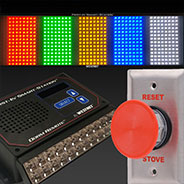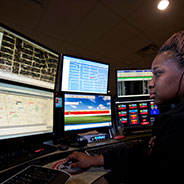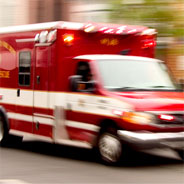Westnet’s First-In Fire Station Alerting System is a zoned notification system utilizing a series of remote alerting modules placed strategically throughout the fire station to notify fire and EMS personnel of an emergency call in the quickest, safest and most advanced means possible.
First-In is designed to provide all information necessary for crews to respond quickly. First-In uses ramped, cardiac-kind tones and visual devices to give crews the key information they need to respond. The First-In Fire Station Alerting System is a reliable, dependable, modular system that can be scaled for use in any size department and fire station. First-In provides many benefits to the Dispatch Center, the Fire Stations and the community at large. It assists with meeting NFPA 1221, 1710 and 1720, as well as aiding with lowering ISO ratings and costs savings for insurance.
Modular & Flexible
The modular design of the First-In Fire Station Alerting System provides public safety agencies affordable equipment options, which range from basic alerting functions to maximum alerting capability and full control of the fire station.
Just as each fire department has its own demands, each fire station may have needs unique to the challenges the crews face daily. The flexibility of the First-In System allows your department to design an alerting system that addresses these distinct needs. Additional alerting modules are commonly added on to our Core System years later to address re-models, additions and changing budgets.

Alerting Activation
First-In has multiple activation methods and can provide automatic back-up alerting in the event of a network issue.
The fastest and most robust way of alerting a fire station is through IP Network alerting. However, networks may not always be available when you need them or in a state of emergency. Westnet’s continuity planning allows for automatic back-up alerting via radio and many other means of contacting the fire station, including:
| IP / Network | Computer Aided Dispatch (CAD) |
| P25 Digital Radio | Two-Tone Sequential |
| High-Speed DTMF | Data Radio |
| Trunking Radio Paging Alert | Dedicated Phone Line |
| Contact Closures | Pagers |

Health & Safety
Firefighter and Dispatcher health and safety are at the forefront of what we do. We want to make sure that the crews who take care of everyone else, stay safe themselves. Reducing stress in both the Dispatch Center and the Fire Station is our focus driven goal.
In the past, a scourched helmet and dirty turnouts were a sign of battle and a badge of courage. Over the years, progress in testing, diagnosing and treating various occupational diseases has made its way to the front lines of public safety. The stress of the physical part of the job is obvious, but the hidden stress takes a terrible toll on the human body. Just as changes in the way turnout gear is processed have decreased risks, so too have changes in the way we alert firefighters to a call.
Lower firefighter stress levels with:
- Zoned Alerting
- Bedside Alerting Units
- Ramped Tones
- Ramped Red Lighting
Serving as a public safety dispatcher has been deemed one of the top 10 most stressful jobs in the United States. With limited resources, staffing shortages, long hours and increased call volumes, many dispatchers are being asked to do more with less.
Lower dispatcher stress levels with:
- Reducing Call Handling & Dispatch Processing Time
- Automatically Vocalize Call Details with Automated Voice Dispatch
- Automatic Back-up Alerting Without Dispatcher Intervention
- Reduce Call Stacking

Fast Response Times
The golden metric by which our industry is defined is how quickly crews get to an emergency. Reduction of turnout times and response times is critical, starting in the Dispatch Center, through the Fire Station to On Scene.
When the constant fight is against the clock, timing is everything. When the difference between life and death comes down to a matter of seconds, you need all the help you can get – you are performing tasks during the critical golden hour. When the difference may be between a knock down or a flashover, time is either your friend or your foe. Whether the call is a medical emergency or a structure fire, how quickly you arrive on scene can determine your success. First-In assist with meeting NFPA 1710 & 1720 for response time metrics.
Reduce response times with:
- IP/Network Alerting
- Pre-Announcements of Units
- Automated Voice Dispatch
- Visual Alerting and Situational Awareness

Network Security
Hackers, viruses, ransomware and security breaches are all too common today. Mitigate the damaging effects of these negative problems by using best practices for public safety alerting.
It seems that every day brings a new story of a major hack or ransomware corrupting a network in order to extort money and information from large corporations or government agencies. The threat is very real and poses tremendous dangers, especially when dealing with public safety information and communications systems. Computers are susceptible to hackers, viruses, ransomware and security breaches. As we have seen in recent years, nefarious characters have attacked major cities, airports, hospitals and public safety agencies.
Westnet does not use a computer as the first point of entry for an alert received at the fire station. This is a major difference between Westnet and other alerting vendors. Westnet does not use computer‐based hardware or software in the fire station primary alerting system. While Westnet does use computers downstream of the critical point of entry to the fire station, the Master Control Unit is not a computer. Our Master Control Unit (MCU) does not need to be regularly replaced like most computers and needs no system shutdowns for security and patch updates. The MCU does not run an operating system and is not susceptible to modern hacking methods.


